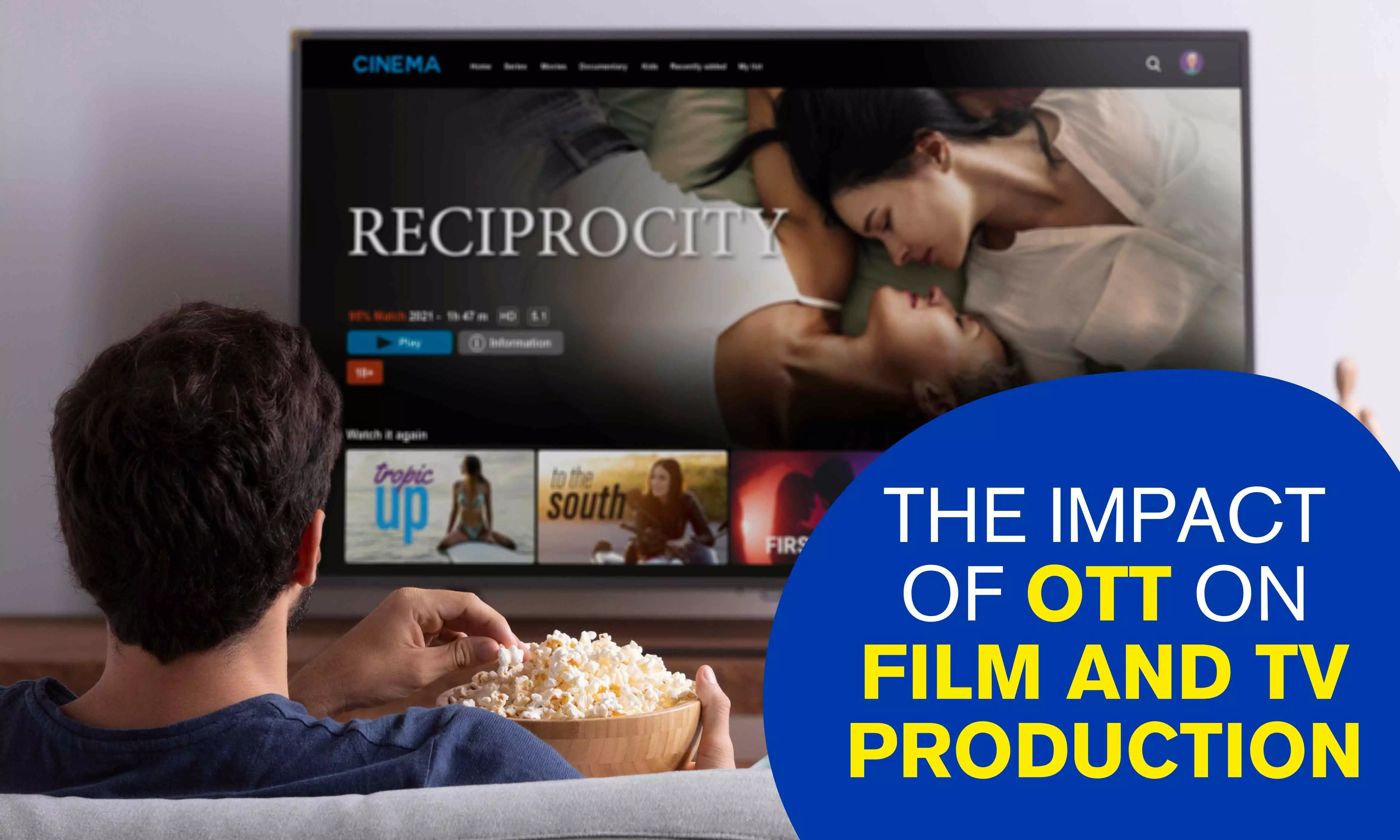The Impact of OTT on Film and TV Production
Learn about the influence of Netflix, Amazon Prime Video, and Disney+ on the film and television industry, and understand the nuances of OTT's impact on film production and how OTT is changing film industry.
The Impact of OTT on Film and TV Production

Have you ever wondered about the transformation brought by Netflix, Amazon Prime Video, and Disney+ to the film and television experience? If yes, so explore the nuances of digital platforms and movie-making. Furthermore, understand how these over-the-top (OTT) platforms are redefining the entertainment sector. Let's start with understanding what OTT is and how it gained popularity.
OTT, also known as Over-the-Top, refers to media services provided directly to viewers via the public internet, rather than through traditional providers such as over-the-air, cable, or satellite-based ones. The OTT platform experienced remarkable growth during the COVID-19 lockdown, leading to an ongoing buzz. According to Google, as of 2024, there are approximately 57 over-the-top (OTT) media service providers in India, offering video on demand and streaming media over the internet.
The rise of Over-the-Top (OTT) platforms has revolutionised the entertainment industry, disrupting traditional distribution models. These digital streaming giants have redefined content creation, consumption, and monetization, sparking industry-wide changes. Let's explore the positive impact of OTT on film and TV production, looking at how streaming services have influenced creative processes, production values, and storytelling.
How Streaming Services Impact Film and TV Production: Film Industry Shifts Due to Streaming
Streaming services have undeniably revolutionised the film industry since the widespread adoption of the internet. This has significantly impacted production processes, content creation, and distribution models. Here are four key ways in which OTT has changed the film industry and its production:
Increased Demand for Original Content: Undeniably, the benefits of OTT and original content creation go hand in hand. This is where, the emergence of OTT platforms has led to a higher demand for original content, reshaping the entertainment industry. This surge in demand has diversified content creation, with streaming services investing in a wide range of original content beyond traditional Hollywood productions. This has led to the production of diverse genres such as documentaries, limited series, and foreign-language films, catering to a variety of audience preferences. Furthermore, the global reach of streaming platforms has allowed content creators to connect with audiences worldwide, promoting diverse cultural perspectives and tastes in TV production during the OTT era. This shift towards OTT has created new opportunities, emphasizing the influence of storytelling in media while enabling creators to showcase their unique voices and ideas.
Shift in Production Models: The rise of streaming services has brought about a significant change in production models, revolutionizing the creation, distribution, and consumption of content. With direct-to-consumer distribution, filmmakers can now bypass traditional theatrical releases, saving costs and gaining greater control over their work. Additionally, the binge-watching culture fostered by streaming platforms has transformed the production and release of series, with entire seasons often being released at once, allowing viewers to consume them at their own pace. This shift has not only changed content consumption but has also enabled creators to produce innovative, engaging, and flexible storytelling that caters to the evolving preferences of modern audiences.
Data-Driven Decision Making: The advent of streaming platforms has ushered in an era of data-driven decision-making in the entertainment industry, where audience insights play a significant role in shaping content creation. With access to vast amounts of data on viewer behavior, producers can now make informed decisions about content creation, based on a deep understanding of audience preferences, trends, and engagement patterns. This data-driven approach enables producers to mitigate risks by investing in content likely to resonate with viewers, while also encouraging experimentation with new genres and storytelling approaches. By leveraging data analytics, producers can refine their content strategies, increase the likelihood of success, and stay ahead of the curve in a rapidly evolving media landscape.
Technological Advancements: The popularity of streaming services has resulted in substantial technological breakthroughs in the film business, raising production quality to new levels. Online platforms and film production trends, including advances such as high-dynamic-range (HDR) imagery and virtual reality (VR), have altered viewers' visual experiences, providing unprecedented immersion and engagement. Furthermore, digital platforms have eliminated geographical barriers, allowing filmmakers and production teams to collaborate worldwide. This has resulted in multinational co-productions, which foster a vibrant exchange of ideas and viewpoints while pushing the frontiers of storytelling. As a result, the craft of filmmaking has evolved into a genuinely global endeavor, powered by cutting-edge technology and creative collaboration.
Rise of OTT: Boon or Bane?
In today's ever-evolving era, the rise of OTT platforms has certainly ushered in a new era for Indian cinema, changing both film and TV production. Furthermore, the digital revolution has also democratised filmmaking, enabling the expression of various viewpoints and the success of independent creators, leading the OTT market to another height.
According to IMARC, the India over-the-top (OTT) market will be worth $22.1 billion by 2032, with a CAGR of 21.93% from 2024 to 2032. In a nutshell, given their expanding popularity, these platforms will undoubtedly continue to play an important role in defining the future of film and television production.

